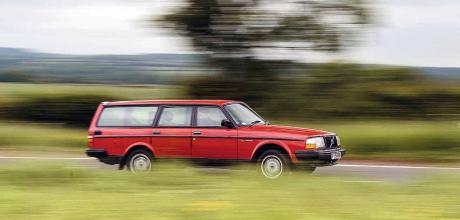1989 Volvo 245 GLT
Volvo has announced the death of its estate cars in the UK. Stephen Bayley laments that loss with the iconically evergreen 245 wagon.
Photography Jordan Butters
WAGON’S ROLLED FAREWELL VOLVO ESTATE
Stephen Bayley laments British suburbia's loss
In any design there’s a bargain between utility and beauty. You get something that is easy on the eye or easy to use. Rarely both. Some say it’s not difficult to see what won Volvo’s negotiation. If anyone finds the Volvo wagon beautiful then maybe we need a new definition of beauty. Often, I think we do.
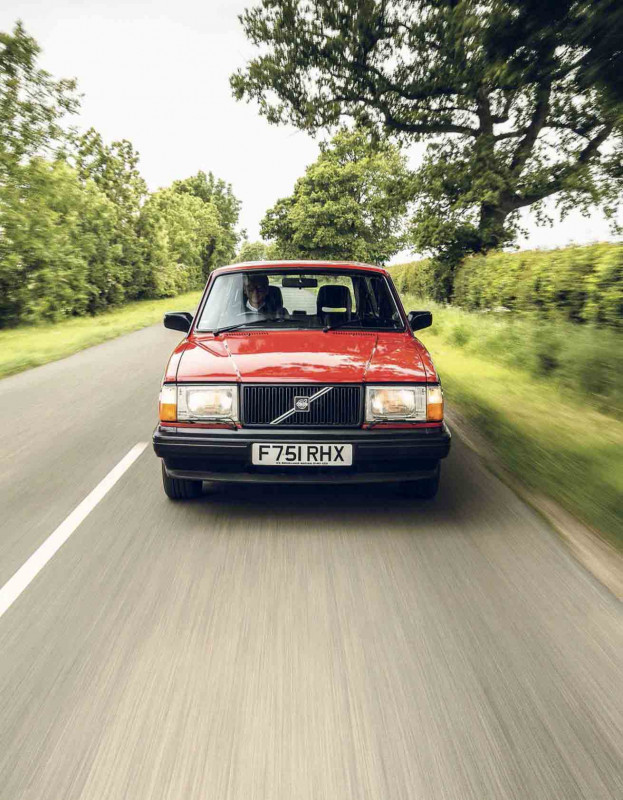
Jan Wilsgaard’s masterpiece was the Volvo 140 saloon of 1966, as great an expression of Swedish good sense and appetite for a well-managed life as a meatbail, a glass of akvavit in a Kattegat sunset — swatting the midges away — or a Bruno Mathsson chair, all blonde wood and woven linen webbing. Wilsgaard has no challengers for the title of Sweden’s greatest car designer. Except he was a Norwegian born in Brooklyn. In matters of design, especially Swedish design, things are rarely quite as they seem.
The 140 succeeded the 120 Amazon (Amason in Sweden) and made a nod to the past by having a pressed metal grille, the design of which vaguely reflected the nostrils of the earlier car. And here a quick diversion for carspotters. In 1971, the grille went black and acquired a diagonal brightwork detail said to be inspired by a bolt of Thor’s trademark lightning.
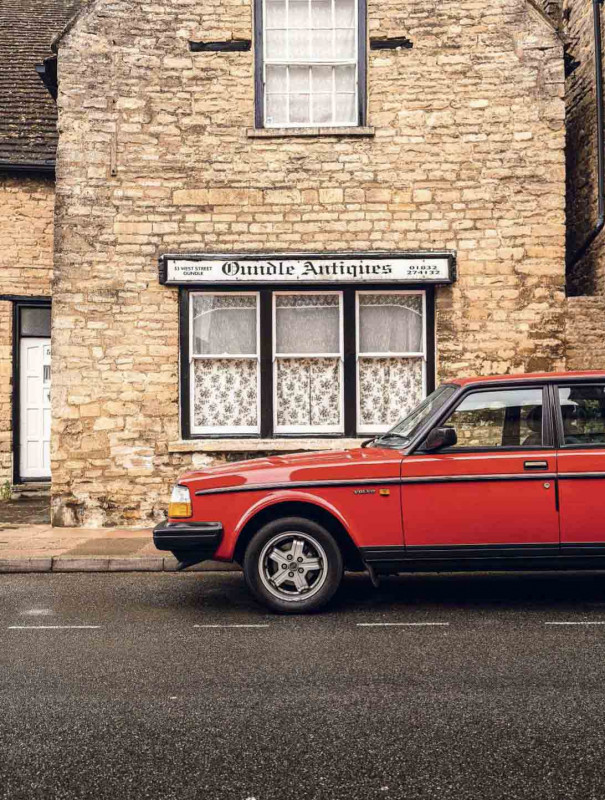
In 1966, when Coke-bottle curves on hiplines were still a thing, when daylight openings were mean, the linear clarity of Wilsgaard’s 140 astonished. A generous glasshouse, no frivolous decoration and bold surfaces suggested a relationship to IKEA flatpacks formed at a genetic rather than a cultural or intellectual level.
The 240 was an evolution of the 140 and appeared in 1974. Its slanting nose was acquired as an hommage to the 1972 VESC ESV safety-car concept that — very much dans le vent at the time — came with an unapologetic nasal cow-catcher, adding an additional layer of semantics.
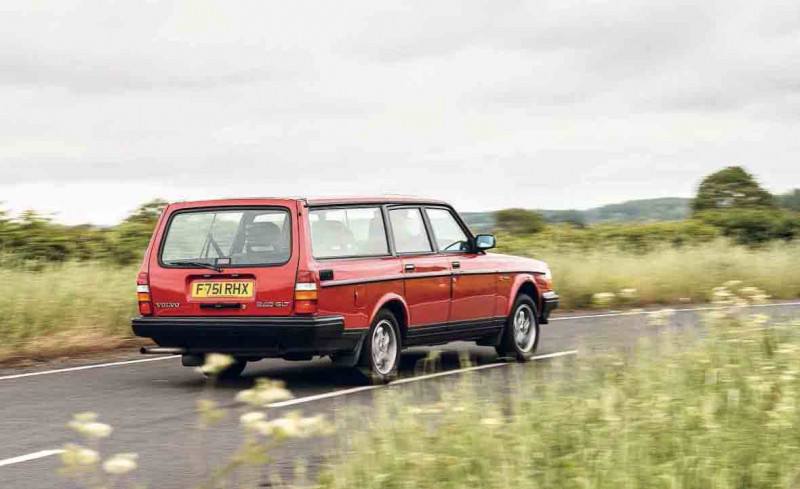
In turquoise-blue with thin whitewalls, it is nearly perfect. I enjoy looking at Stephen Shore’s photographs of suburban America and realising how at home the Volvo looks.
But the wagon, or 245, is our subject. And let’s emphasise that it is not a shooting brake, with all those status associations of voiture de chasse. It’s much more nearly an American station wagon, with all its own associations of a car designed for suburban utility: picking up travellers from the railway. Volvo’s American connections are profound: the first Volvos were cargo-cult American cars, big and ruggedised to cope with Sweden’s tough backroads where a collision with an elk was an everyday possibility.
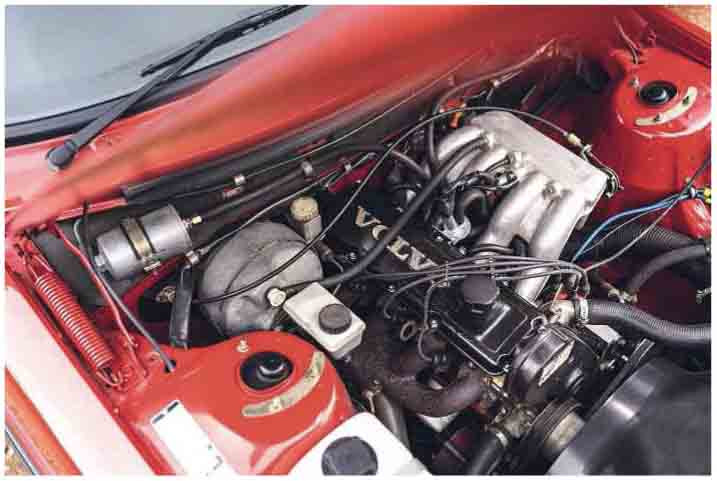
Look hard at our photographs and try to see — perhaps for the first time — what an astonishing profile this car has. The wagon is improbably square, as if French curves had been banned in Gothenburg’s Hogskolan for Design och Konsthantverk, where Wilsgaard trained, lest their lascivious contours might deprave the innocent students.
‘The 245’s buttoned leather interior is simultaneously ruggedised and indulgent’
This formal boldness provides so much space in the back of a Volvo wagon that you could fill it with all the cliches about the brand and still have room for a wide range of IKEA furniture as well as a couple of dogs, your grandmother’s leg-warmers and gym bag, golf cart, a folding bike, carry-cot, plus the weekly Sainsbury’s shop (which would have included muesli, a grocery staple that, for some reason, people find hilarious).
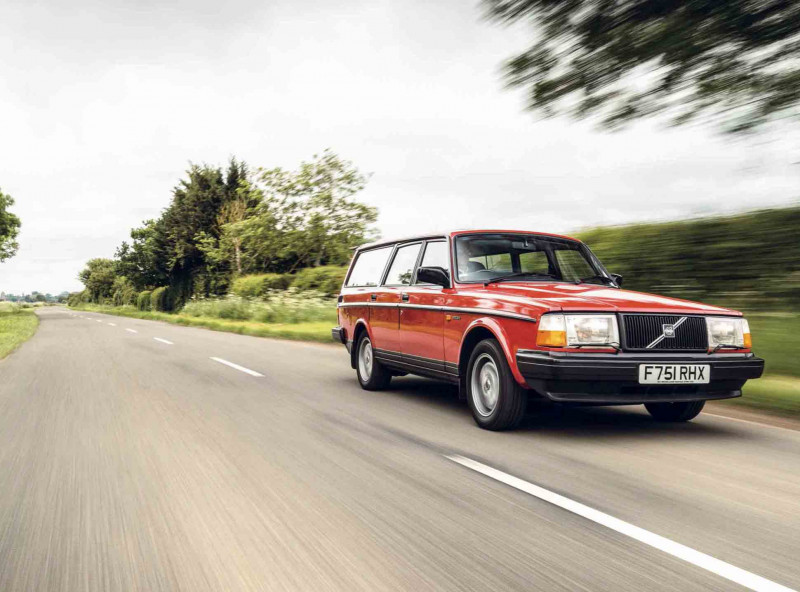
The Sainsbury’s reference is significant. Volvo’s reputation for being sensible, already established by the 1960s, was carved into solid tablets of granite in the ad campaigns of the 1980s by the Abbott Mead Vickers advertising agency. AMV ignored Volvo’s ordinariness, concentrating instead on more positive, if abstract, virtues. And, at the same time the agency was working on the Volvo account, AMV was also creating the Sainsbury’s ads. This gave creative director David Abbott a degree of esoteric control over British middleclass values that was nearly total.
The Sainsbury’s ads were long-copy. They didn’t say ‘Buy a bottle of our sherry’, they explained in a gentle, didactic style exactly why amontillado was so good for you. And with Volvo, research showed that most customers were repeat buyers, so the ads existed not to make new sales, but to confirm among consumers decisions and assumptions they had already made.
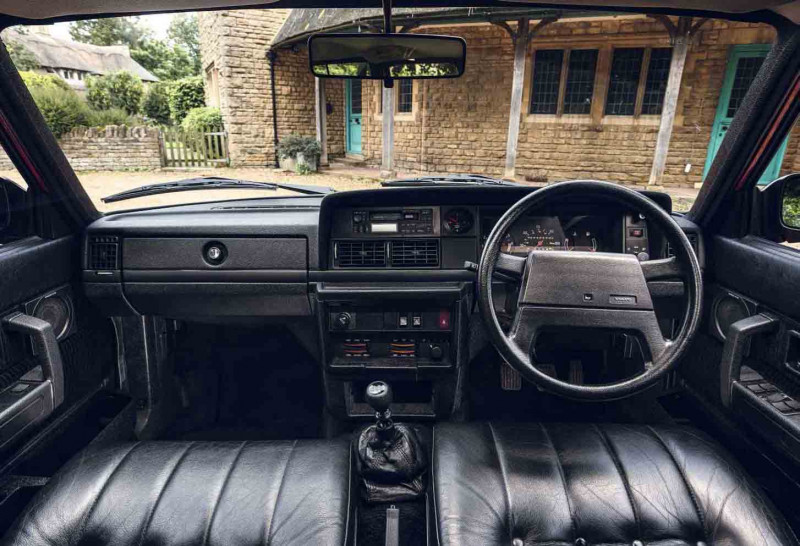
Abbott once told me that selling Volvos was about ‘the prestige of the intellect, not the prestige of money’. In the US, Volvo ads in the 1980s said: ‘The car for people who think’. And people who thought, from Virginia Water to White Plains, did their thinking in Volvos. And with so much room, there was more space for minds to wander in a wagon.
But if we make a case for the Volvo wagon as an exemplar of Sweden’s national inclination towards utilitarianism then we will be slightly missing the point. Sweden was the first country to make design a national objective. The Svenska Sljodforeningen (which we’ll leave untranslated) promoted the ‘house beautiful’ movement with the motto vackrare vardagsvara, which is a demand for ‘more beautiful everyday things’. The great Stockholm Exhibition of 1930 announced this to the world and ‘Swedish Modern became a thing. Endearingly, its functionalist protagonists were called The Funkis. And the 145/245 Volvo Wagon is surely the Funki car of all time.
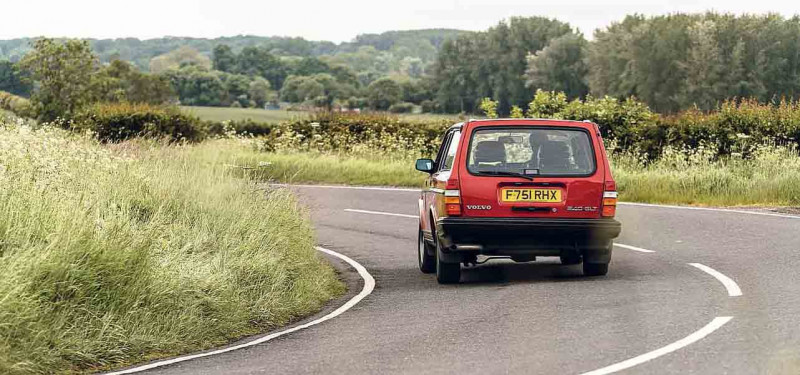
Except Swedish Modern is generally misunderstood. For every grainy black- and-white photograph of an austere forest crematorium, there were comfortable drawing rooms with colourful floral-patterned upholstery by Josef Frank that rooted the movement in easy-going suburban charm. At the same time, it’s an error to see Volvo as utilitarian and dull. You need only look at the designer’s back-story.
One of Wilsgaard’s first projects, what we today would call a concept car, was the 1952 ‘Philip’, a hymn to his native America, all metallic paint and sensitive curves. Later, when Wilsgaard showed his 121 Amazon designs to Volvo’s founders Gustaf Larsson and Assar Gabrielson, there was embarrassed coughing and they said: ‘There is too much of the pin-up about it. It would be better if it was ugly.’ Pinups were, however, on Wilsgaard’s mind: early 121 advertising featured Amazon women — female warriors from Scythia — in scanty tunics and waving swords. This being health conscious Sweden, the warriors had both breasts intact even if, in a functionalist spirit, the original Amazons had one breast removed so as to make archery more ergonomic.
‘Look hard at our photos and try to see what an astonishing profile this car has’
The decadence doesn’t end there. The Amazon was the first Volvo with two-tone paint. But because Volvo is interested in utility, it was also the first car anywhere with ergonomic seats (the lumbar support of which had, hilariously, to be adjusted with the screwdriver you had left-over from your IKEA assembly project weekend). Then Wilsgaard curated another pin-up car, the very pretty P1800 of 1959, drawn by Pelle Petterson who went on to design Americas Cup ships.
So the 140 inherited corporate interests in beauty and utility. Perhaps you can see this best in the interior. And it is with interiors that Swedish Modern expressed itself: so many long, dark, winter nights with no company but a spruce-burning stove forced an emphasis on domestic comfort. While no-one in sunny southern Europe ever bothered much with woven wall-hangings incorporating leaves and bark, nubbly wool offered psychological comfort in the Swedish cold as much as visual charm. Possibly they had an additional insulating effect. When it comes to rugs and tapestries, Sweden is the 20th Century reference point.
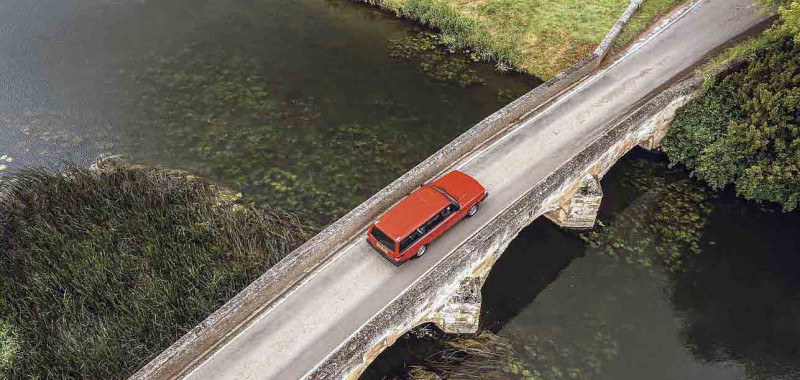
The 245 s interior is simultaneously ruggedised and indulgent Those gorgeous buttoned leather chairs, designed before ergonomics became an expressionist sales tool, are helplessly seductive. Then there are simple tumbler switches and thumb-wheels plus a steering-wheel boss that uses non-verbal communication to say safety’. It is not so much no-nonsense as nonsense never having been considered in the first place. A friend commented he had never heard a glovebox lid shut with such impressive resolve. Gloves and their storage are not trivial when it’s -30°C. This would be a comforting place on a dirty night’s sub-zero journey north of the Arctic Circle. How much more secure such a car might have felt on the Kingston Bypass or Country Club Road in New Canaan.
Recollections may differ, as the late Queen said, but I feel certain one day long ago I saw a three-door 240-series wagon (a 243?) at Copenhagen’s Kastrup airport. My retained mental image is of a vehicle of uncompromised utility, a tool more than an emotionally charged machine. What is certain is that, as if to detox any machismo attached to the car, Volvo did make an extended-wheelbase schoolbus version. Yet for all its suburban normality, even invisibility, the wagon speaks a very strong design language. It speaks Volvo.
And it is not only Sainsbury’s shoppers who heard. Humphrey Ocean, Britain’s best portrait painter, made his reputation with the picture Lord Volvo and His Estate. Admittedly it showed an Amazon, but the louche, polysyllabic pirate who is the novelist Will Self was inspired to write Design Faults in the Volvo 760 Turbo. Bland cars do not inspire artists and writers.
I know and like Self, but I’d wrestle him to the floor and beat him with his vape if he ever tried to criticise the 245. Sure, in a simplistic way the bargain between utility and beauty was resolved in favour of the former. But in a world of compromise and muddle, the absolute clarity of this car is in itself beautiful. It is the ordinary done extraordinarily well, a definition of excellence in whatever medium or language you choose. And how appropriate that ‘Funki’ is a homophone whose other meaning is a strong rhythm that’s easy to dance to.
No opposite-lock power slides here, but a car that makes you want to travel. A thing of beauty and utility, in fact. Its like will be much-missed.
WHAT WE’RE MISSING
Glen Waddington examines the essence of the big Volvo’s appeal
British middle-class suburbs were long awash with Volvo estates. These days that pre-eminence has been diluted by the rise of the SUV, not least Volvo SUVs, hence the Swedes' decision to concentrate on those instead.
Let's face it: we're not going to miss them for their dynamics. Volvo might have built cars for a country with a network of gravel roads, but the rugged rallying appeal of the PV and Amazon was displaced by a perception of vehicle safety and practicality, combined with an image of quiet respectability. And that sold very nicely thank you for three or four decades, targeting perfectly the sensibilities of those wholesomely comfortable UK households.
Yet drive the 245 and you might still detect an undertone of Amazon in the steely engine note and the solidity of the gearshift. This is a big car, nearly 16ft stem-to-stern, though narrower than any modern supermini and a relative featherweight at 1354kg: today that's VW Golf territory. Five will sit upright and in close proximity widthways yet with ample room for heads and legs, plus space aft for a double wardrobe, an American-style fridge-freezer and two Labradors. Well, nearly.
You won't be throwing it around; I tried and it quickly came undone, yumping in response to a hump and a sharp turn and quickly losing any relationship between body and wheels. But Mr and Mrs Suburban didn't want to upset kids/dogs/antiques, and instead were pleased by a slug of torque, agreeably subdued engine vocals, easy-going steering, big, cushy seats and a gently buoyant ride. Go with the flow and it's an enjoyably mollifying experience, easing its way towards a congenial and muted cruise. In the middle lane. Never over 70.
They're enjoying a comeback now, those boxy lines appealing to youngsters who favour its period looks over performance; others love the cars’ simplicity and mega-mileage toughness, and firm market values attest to their increasing popularity.
The 240 generation died in 1993 after a 19-year run and nearly 2.7million built, having overlapped with the angular 740 since 1982; the smaller (though equally square-backed) front-wheel-drive 850 had arrived in 1991, spawning the cult sleeper T-5 R. Three generations of V70 saw Volvo pass into and out of Ford ownership, and the current (rather less square) V90 bows out with Chinese conglomerate Geely at the helm.
Above and right There's a saloon version, too, of course, but the big Volvo is all about that huge loadspace; 2.3-litre four-cylinder is accordingly stoic.
Clockwise, from above Aerial view makes obvious just how long the Volvo 245 is; corners are to be endured rather than relished; interior is solid, rectilinear, comfortable, logical.
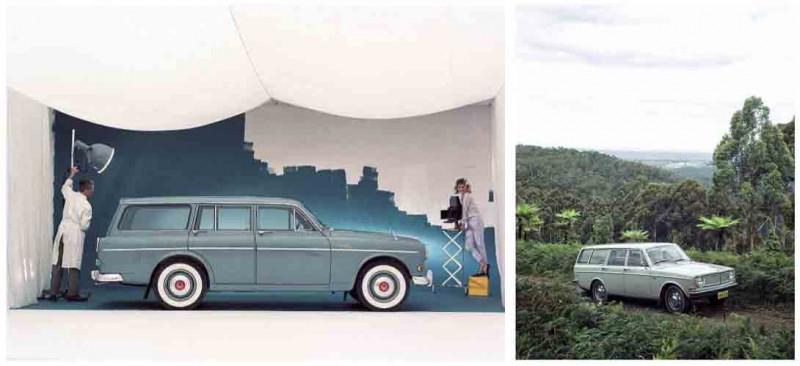
Clockwise, from far left This superb 43,000-mile example was originally a company car, kept beyond retirement — it now belongs to Volvo UK's heritage fleet; early 145 and predecessor Amazon.
TECHNICAL DATA 1989 Volvo 245 GLT
- Engine 2316cc OHC four-cylinder, Bosch fuel injection
- Max Power 114bhp @ 5400rpm
- Max Torque 136lb ft @ 2400rpm
- Transmission Five-speed manual, rear-wheel drive
- Steering Rack and pinion, power-assisted
- Suspension Front: MacPherson struts, coil springs, anti-roll bar. Rear: live axle, coil springs, telescopic dampers, anti-roll bar
- Brakes Discs, vented at front
- Weight 1354kg
- Top speed 112mph
- Acceleration 0-60mph 11.0sec
‘I am passionate about architecture and cars. Each is a design exercise involving human habitation and personal desire. With its robust structure and comfy chairs, I'd be happy to call a Volvo estate “home”. Even if it is a suburban home!'


